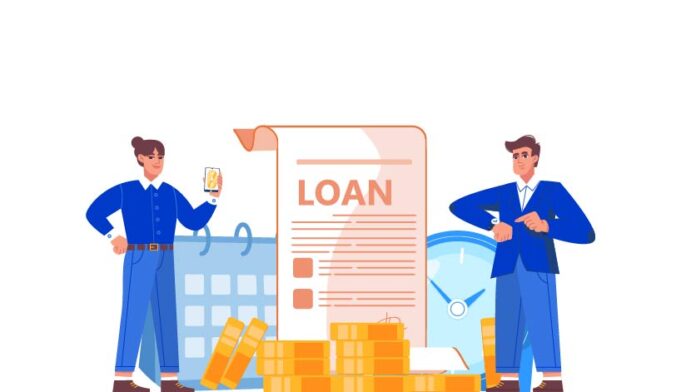Short-Term Personal Loan vs. Long-Term Personal Loan – Key Differences
When you need quick funds for purposes like emergencies or planned expenses, personal loans could help. Choosing between a short-term and long-term loan depends on factors like repayment capacity, interest rates, and loan amount. This article outlines the key differences to help you understand both options better.
What is a Short-Term Personal Loan
A short-term personal loan typically comes with a repayment period of up to 24 months. These loans are generally for smaller amounts and are useful for meeting immediate or one-time expenses.
Key Features
- Tenure: Usually 12 to 24 months
- Loan Amount: Often lower than long-term loans
- Interest Rate: May be slightly higher due to shorter recovery time
- Eligibility: Easier to qualify for if you have a stable income
- Purpose: Emergency expenses, short-term commitments, or small-ticket purchases
What is a Long-Term Personal Loan
A long-term personal loan refers to loans that are repaid over more than 24 months, typically extending up to 60 months or more. These are usually taken for larger financial needs.
Key Features
- Tenure: Usually ranges from 3 to 5 years or more
- Loan Amount: Higher compared to short-term personal loan
- Interest Rate: Can be lower due to longer repayment period
- Eligibility: Lenders may require strong credit history and stable income
- Purpose: Wedding, education, home renovation, debt consolidation
Comparison Table: Short-Term vs Long-Term Personal Loans
Here’s a side-by-side comparison of key aspects:
| Feature | Short-Term Loan | Long-Term Loan |
| Repayment Period | Up to 2 years | 3 to 5 years or more |
| Loan Amount | Lower | Higher |
| Interest Rate | Higher (in most cases) | Comparatively lower |
| EMI Amount | Higher per month | Lower per month |
| Total Interest Outgo | Lower | Higher |
| Processing Time | Usually quicker | May involve more checks |
| Best Suited For | Urgent, short-term needs | Planned, long-term expenses |
Note: The actual terms depend on the lender’s policy and borrower’s profile.
Key Differences Explained
Understanding how these two loan types vary across repayment, cost, and flexibility can help you choose the option that fits your financial situation best.
1. EMI Burden
Short-term loans come with higher EMIs due to shorter tenures, requiring stronger repayment capacity. Long-term loans spread EMIs over more months, easing monthly pressure.
2. Total Interest Paid
Though short-term loans may have higher rates, the overall interest paid is usually lower. Long-term loans may cost more in total interest due to extended repayment.
3. Loan Approval and Documentation
Short-term loans often need minimal paperwork and get processed faster. Long-term loans, especially for bigger amounts, may involve detailed checks and approvals.
4. Flexibility in Planning
If your income allows, short-term loans can help you clear debt faster. Long-term loans offer more flexibility with lower EMIs, which may suit tighter budgets.
When to Choose a Short-Term Personal Loan
Here’s when a short-term personal loan could be a better fit:
- You need funds quickly for a short-term financial goal
- You can comfortably afford higher EMIs
- You want to save on total interest
- The loan amount is modest and doesn’t warrant long repayment
Common scenarios include travel bookings, sudden repairs, or minor medical expenses.
When to Choose a Long-Term Personal Loan
Here’s when a long-term personal loan may be a better choice:
- You’re planning for a high-cost expenditure
- You prefer lower monthly EMIs to manage cash flow
- You have a strong credit profile and income stability
- You don’t expect major financial changes in the near future
Typical use cases include wedding expenses, home renovation, or education fees.
Things to Consider Before Choosing the Loan Tenure
Here’s what to consider before finalising your loan tenure:
1. Evaluate Repayment Capacity
Check your monthly obligations and see how much EMI you can realistically afford. Overstretching may lead to defaults and affect your credit score.
2. Consider Loan Amount
A short-term loan might not be suitable for larger amounts due to the burden of high EMIs. Similarly, using a long-term loan for a small amount may not be cost-effective in the long run.
3. Impact on Credit Score
Timely repayment of either loan type builds your credit score. However, a short-term loan, if repaid early and without defaults, may boost your credit profile faster.
4. Prepayment or Foreclosure Charges
Check if the lender allows early repayment and whether there are any charges. Paying off a long-term loan early can help reduce interest burden.
Choosing the right loan platform is as important as picking the right tenure. A financial marketplace such as Bajaj Markets enables users to compare multiple loan options in one place, with paperless application processes and flexible repayment features.
Conclusion
Short-term and long-term personal loans cater to different needs. While short-term loans enable quicker repayment, long-term loans offer lower EMIs over time. Your choice should depend on your financial goals, repayment capacity, and loan amount.










